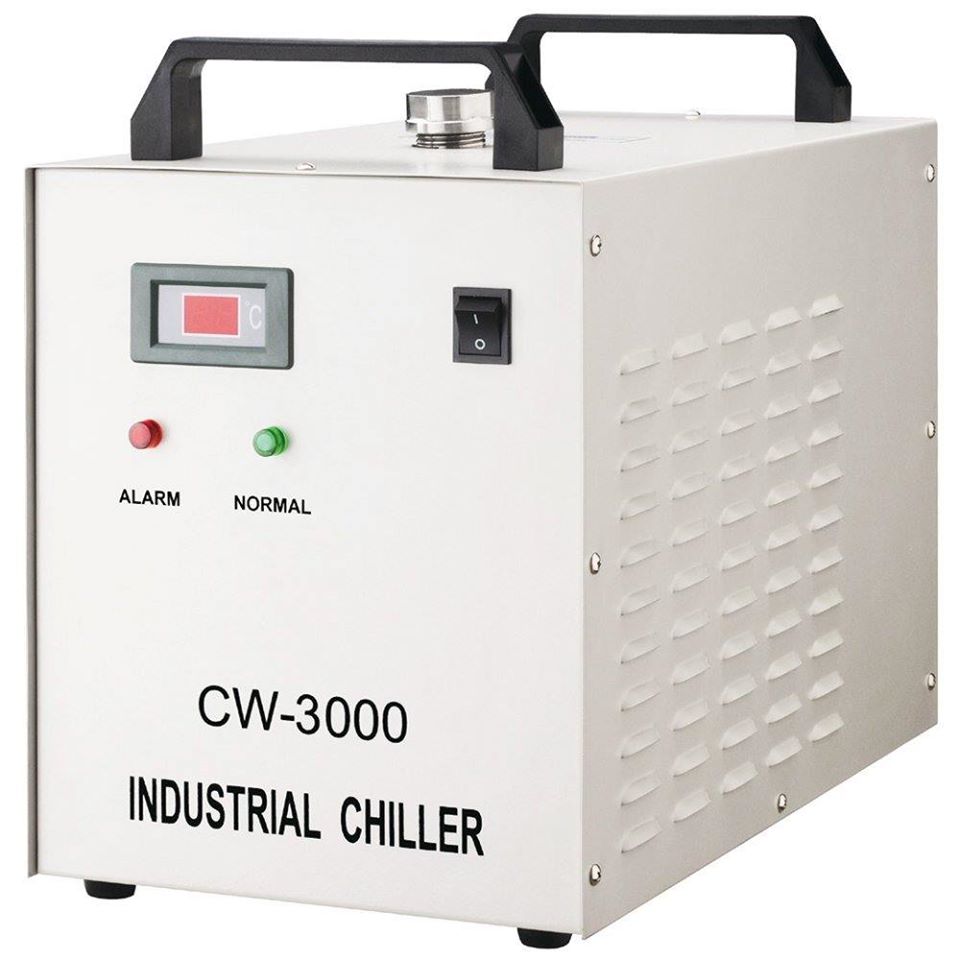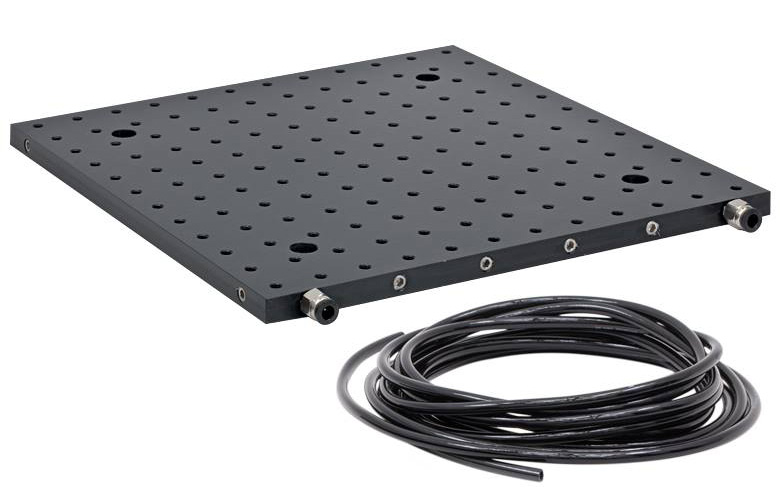
The following words and pictures were purloined from Jeffrey Weil via Facebook Holography Group.
Here's a new and cheap way to water cool solid state lasers.
A radiator. This is very much like a chiller but without the refrigeration equipment.

“The CW 3000 Industrial Chiller”. Ignore the name, it is not a chiller, it's a radiator. This can be purchased anywhere around the world for less than $200 U.S. dollars. They are very common in the laser engraving industry. In the U.S. they can be found on Amazon, Ebay and many online retailers.
While these units are very common everywhere in the developed world they've never been marketed to scientific users.
The box contains a set of aluminum cooling tubes, fan, water pump, storage tank, flow alarm, temperature display and other bits. But no refrigeration equipment. It's a simple heat exchanger using a forced air fan for cooling and with some electronics to protect your equipment from too much heat or if the water is not flowing properly.
.jpg)
The specs of this unit it says that it can handle “60watts” of heat. For three 200mw holography lasers you're looking about about 55-65 watts of heat. But the specs on the CW 3000 have been mistranslated. This was clear the first time I hooked it up with a Lasos 200mw Red and a Coherent Compass 160mw Green laser. The radiator had no problem at all with the load, which should have been near its top end of cooling capacity according to the specifications. Instead, everything was ambient.
Even after completely shutting down the cooling fan everything stayed at room temperature. If the CW 3000 was truly rated at 60watts, heat should have built up very quickly. With no forced cooling at at all I saw no rise in temperature. After some searching on the net I found that the listed specification was not correct.
The CW 3000 can actually handle the heat of a 60 watt laser engraving machine running at a 60% duty cycle. That is much, much more heat than what is produced from three holography lasers running at 100% duty cycle. The original Chinese specification had been mistranslated and passed along.
Just to make sure the heat doesn't sneak up over time I cut into the top of the case and installed a silent computer case fan blowing down on the cooling tubes inside the CW 3000's case. The radiator originally came with a 150 watt 110ac fan that was very loud. Now all you can hear is a slight hum from the water pump. I put two new switches on the face of the radiator to control the old and new cooling fans. They can work together if necessary. The original fan pulls air out of the case and the new pushes it in.
If I want to put something much hotter than three holography lasers on the plate I just turn the original 150 watt fan on with one of the new front switches. No need though. The new fan alone is enough to keep 3 holography lasers cool and it produces almost no noise at all. The water pump is strong enough to push the water to the ceiling of the lab on its way to the table, and back, and still move 1.5 liters a minute through 100 feet of 3/8 id hose and the smaller channels inside the cooling plate. That might not seen like a lot of water but it's enough to keep everything at room temperature.

The radiator has an alarm that goes off if the water goes over 30 degrees C and the built in temperature display seems accurate. There's a relay to shut down the lasers if the temperature rises too much and a nice modular connector to hook up external equipment.
Since the radiator is so inexpensive there's money left over for a quality water cooled plate. ThorLabs makes a very nice breadboard that's plumed for water cooling. A 12x12 board can be had for less than $450 U.S. dollars. A 12x18 is $630.
With the CW 3000 radiator and a 12”x12 inch cooling breadboard there's enough space and cooling capacity for 3 holography sized solid state lasers, water cooled for under $700 bucks, all brand new! I got a 12x18 and the total cost was still under $900. A used chiller will cost more than that without the breadboard. Thor has other sizes available. A simple cold plate could also be made from a heat sink and some copper tubing if you want to put the savings into other things.
With only the slight noise from the water pump it's very comfortable to work with it in the lab. The computer case fan I installed moves little air and the radiator's case distributes it around its perimeter. There's few air currents to worry about as long as the radiator is not too close to the table.
Thank you, Jeff!